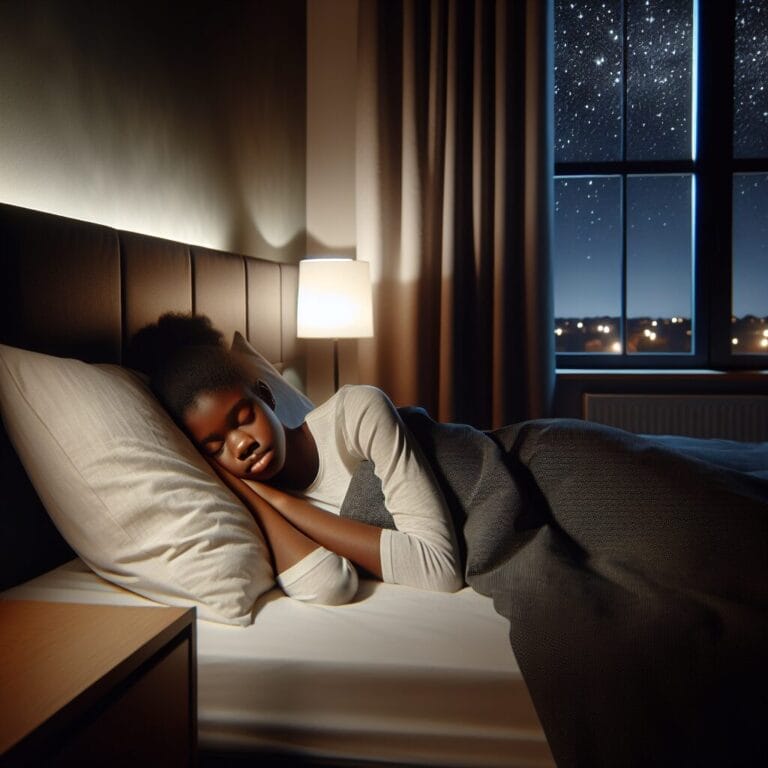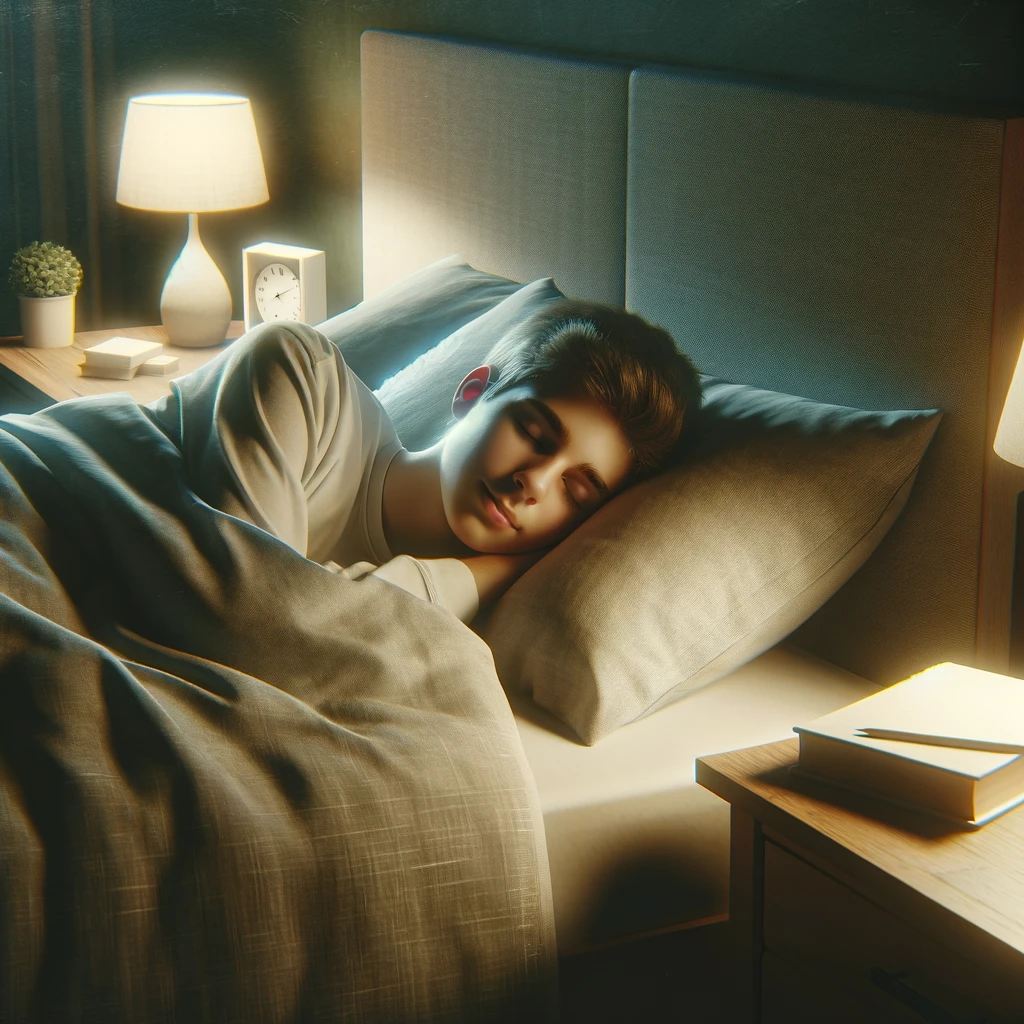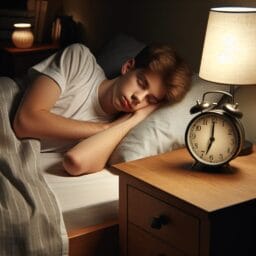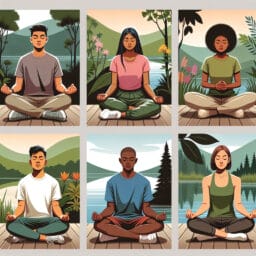
Improving Teen Sleep: Essential Tips for Managing the Impact of Smoking and Alcohol
Table of Contents
- Introduction
- Understanding Sleep in Teenagers
- The Effects of Smoking on Sleep
- The Effects of Alcohol on Sleep
- Practical Tips for Improving Sleep
- Intervention and Support
- Conclusion
- Frequently Asked Questions
Introduction
Did you know that a teen’s body clock is like a busy bee, buzzing with activity but often out of sync with the world? Teens’ circadian rhythms naturally make them night owls, which can lead to delayed phase sleep syndrome. This means they want to stay up late and wake up later, but early school start times don’t agree with their internal buzzers. When sleep duration gets crunched, it can lead to a bunch of sleepy teens dragging their feet to class.
Now throw substances like alcohol and energy drinks into the mix, and you’ve got an even stickier situation. Adolescent alcohol use isn’t just about breaking rules—it can mess with the delicate dance between sleep-wake cycles and brain function. That extra soda or coffee loaded with caffeine might seem like a quick fix for feeling tired, but it’s more like putting a band-aid on a water balloon—eventually, it’s going to burst! Energy drinks especially are sneaky culprits of sleep problems; they give teens a zing when what they really need is more zzz’s.
And here’s something to chew on: poor sleep hygiene isn’t only about feeling groggy in math class—it’s also about long-term health. Chronic sleep deprivation can be friends with some serious troublemakers like obesity, depression, and even restless legs syndrome (imagine trying to snooze while your legs want to run a marathon!). It’s crucial for teens to establish a bedtime routine that signals their circadian system it’s time for dreamland. This could mean winding down before bed without screens or finding relaxation techniques that work for them.
So what can be done? Understanding how the circadian timing affects sleep important for everyone involved—parents, teachers, and health providers alike. By tweaking those sleep schedules and ensuring bedrooms are cozy sleep environments free from distractions, we encourage better rest. Let’s not forget addressing those risky behaviors around adolescent alcohol or tobacco use – these are risk factors we can’t overlook if we want our teens bright-eyed for their bright futures!
Understanding Sleep in Teenagers
Did you know that during the teenage years, our bodies need about 8-10 hours of shut-eye each night to keep everything ticking like a well-oiled machine? But here’s the scoop: lots of teens are getting way less than that! They’re staying up late, eyes glued to screens or maybe even stressing over tomorrow’s history presentation (yikes!), and their sleep schedule gets all wonky. That’s when trouble sleeping creeps in like an uninvited guest at a sleepover.
Now, let’s talk about something super important—sleep hygiene. It’s kinda like brushing your teeth but for your brain. Good sleep hygiene means having a cozy sleep environment where it’s dark and quiet, sticking to a bedtime routine (yes, even on weekends), and keeping those buzzing gadgets out of bed. It’s all about setting the stage for extra sleep so that teens wake up feeling more superhero and less zombie.
But here comes the twist! Some teens might think knocking back energy drinks will give them laser focus for studying or that sneaking sips of alcohol is cool—it’s not! This is what we call circadian misalignment, when life’s choices tangle up with our body clock, messing up our natural rhythms. Drinking alcohol can really goof up how we snooze—it changes sleep duration and can lead to persistent sleep problems. And while energy drinks give you wings for a bit, they’ll make you crash later.
The truth is, when teenagers skimp on zzz’s because of alcohol problems or gulping down too many sodas with dinner, it affects their brain function big time! Poor academic performance can follow suit because who can ace algebra without enough dream time? Plus, if this becomes a nasty habit, hello chronic sleep deprivation—this means potential health hiccups down the road like restless legs syndrome or mood swings.
So let’s wrap this up with some brain food for thought: better understanding these unique teen sleep patterns—the whole shebang from circadian timing to environmental factors—can help prevent those pesky sleeping problems. Encourage teens to tune into their internal clocks and find their sweet spot for restful nights. After all, good day starts with good night—let’s help them hit the hay right!
| Focus Area | Description | Tips for Improvement |
|---|---|---|
| Recommended Sleep | Teenagers need about 8-10 hours of sleep each night. | Encourage a consistent sleep schedule and adequate night rest. |
| Sleep Hygiene | Good sleep hygiene involves a dark, quiet sleep environment and no screens before bedtime. | Develop a relaxing bedtime routine, keep the bedroom comfortable, and limit screen time in the evening. |
| Circadian Rhythm | Teens often experience circadian misalignment due to lifestyle choices, affecting natural sleep patterns. | Maintain regular sleep-wake times and avoid substances that can disrupt sleep like caffeine and alcohol. |
| Substance Impact | Alcohol and energy drinks can alter sleep duration and quality, leading to sleep disturbances. | Encourage teens to avoid or limit consumption of alcohol and caffeinated drinks, especially before bedtime. |
| Consequences of Sleep Deprivation | Lack of sleep can lead to poor academic performance, mood swings, and chronic health issues. | Promote healthy lifestyle choices and stress the importance of sleep for brain function and overall health. |
| Cognitive and Health Effects | Insufficient sleep can affect brain function and increase the risk of health problems. | Support teens in establishing habits that prioritize sleep and manage school or social pressures. |
The Effects of Smoking on Sleep
Picture this: A teenager’s room, dimly lit by the blue glow of a cellphone long after the stars are out. It’s past midnight, and instead of being in dreamland, they’re scrolling through feeds or texting friends, unaware that each ping and buzz throws their body clock—a delicate timekeeper that loves routine—out of whack. Yes, our teens live in a digital world where screens can be sleep stealers, and this screen time before bedtime is a big no-no for sleep hygiene.
Let’s talk about another sneak thief of teen slumber – nicotine. It’s not just an old-school vice; it’s a modern-day troublemaker for teen sleep architecture. You see, when adolescents light up or vape up, nicotine barges into their brains and bodies like an uninvited guest who decides to crank up some tunes right when you’re trying to sleep. This stimulant kicks the heart rate into high gear and tells the brain to be on alert—the exact opposite of what it should be doing at bedtime.
Now dig into this: Studies are finding that young smokers are more likely to wrestle with sleep disorders than their non-smoking peers. And here’s why that matters—sleep timing gets all mixed up with frequent awakenings throughout the night (hello, insomnia!), not to mention the grogginess that follows them into daylight hours (goodbye concentration!). Trouble sleeping isn’t just about feeling tired; it muddles everything from mood swings to school grades.
But wait—it’s not all doom and gloom! Kick the habit, say goodbye to cigarettes, and behold—the potential benefits for sleep quality bloom like daisies in springtime. Smoking cessation might seem as tough as climbing Mount Everest in flip-flops but imagine trading restless nights for restful slumbers—that’s one trade-off worth exploring!
When teens say “no” to nicotine, they also give their circadian rhythms a break from battling smoke rings. The result? They could start seeing improvements in how fast they fall asleep (sleep latency) and how tightly they snooze (sleep cohesion). Plus better zzz’s lead to sharper brains ready to conquer algebra tests and history essays.
So let’s cheer on our teens as they navigate through these tricky years! Encouraging them toward smoking cessation doesn’t just clear up lung space; it paves the way for sweet dreams at night—recharging those batteries for healthier days ahead. Let’s invest in creating smoke-free zones around clocks both external and internal because catching extra Zs today could mean catching dreams tomorrow.

The Effects of Alcohol on Sleep
Did you know that sipping on alcohol can do a real number on an adolescent’s body clock? You bet! When teens tipple, it’s like throwing a wrench into the finely tuned machinery of their circadian rhythms. Imagine their internal sleep-wake cycle trying to keep the beat while alcohol throws off its groove – it’s no wonder they end up with wonky sleeping patterns!
Here’s the lowdown: Alcohol messes with deep sleep – that super important stage where the brain goes on a cleaning spree, sweeping away the day’s mental clutter. And when teens don’t get enough of this cleanup time because of alcohol problems, it can leave them feeling like their brain is stuffed in a foggy cotton ball during school.
The effects aren’t just for one night either; frequent alcohol use can lead to chronic sleep deprivation. That means trouble with everything from keeping tempers cool to staying sharp for that pop quiz in first period. Plus, messing with natural sleep timings can be one gnarly risk factor for restless legs syndrome – imagine those pins and needles feelings interrupting your sweet dream escape!
But here’s some good news: There are strategies out there to help teens dodge these bedtime blues! First off, creating a chill-out bedtime routine far from any bottles or cans helps signal the circadian system that it’s time to power down. Keeping bedrooms as cozy havens for extra sleep without booze anywhere in sight is key.
Let’s not forget about education on why catching more Zs matters – teaching adolescents about how boozing bungles their sleep profile can inspire them to choose mocktails over cocktails. Encouraging activities like sports or arts instead of party scenes can also boost their chances at better rest.
And let’s talk solutions – getting pros involved when needed means tapping into some serious sleep medicine knowledge. They’ll whip out evidence-based strategies faster than you can say ‘adolescent alcohol,’ helping put those pesky sleeping problems to bed once and for all.
So, wrapping things up (without saying “in conclusion”), let’s guide our teeming teens towards healthier sips and snoozes. By understanding how boozy habits impact their slumber and reshaping those risky behaviors, we arm them with the restful tools they need to buzz through life bright-eyed and bushy-tailed!
Practical Tips for Improving Sleep
Hey there, night owls and daydreamers! Let’s chat about the secret recipe for snooze-ville success. You see, getting that gold star in Sleep 101 means mixing a bit of this and a dash of that to cook up the perfect bedtime routine. It’s not rocket science; it’s sleep science!
Imagine your bedroom as a cozy cave – it’s gotta be just right for hibernating. We’re talking cool, dark, and quiet. Ditch the noisy gadgets and glowing screens because they’re party crashers to your sleep-wake cycle! And hey, those pesky caffeinated culprits like energy drinks? They can wait until morning light.
Now let’s consider the stress monsters lurking under the bed. Breathing exercises or writing out tomorrow’s to-dos can send those worries packing so you can drift off without a hitch. Also, how about swapping out scrolling through social media with some chill tunes or maybe a good ol’ book? That’s like telling your body clock it’s time to hit the hay.
And while we’re at it, let’s tackle those wild weekends that throw your circadian rhythms into a loop-de-loop. Staying up super late then sleeping till noon might feel awesome at first but come Monday… yikes! Locking down a steady sleep schedule is like giving your brain an all-access pass to dreamland every single night.
But hold up—what if you’ve tried all these tricks and still find yourself counting sheep? Enter sleep medicine superheroes to save the day (or night)! They’ve got the lowdown on everything from delayed phase syndrome to restless legs syndrome. So don’t be shy; getting help is way cooler than struggling alone!
Alrighty, as we wrap this sleep talk up (without saying “the end”), remember: creating that dreamy sleep environment and peaceful bedtime routine isn’t just nice—it’s necessary! It helps keep those circadian systems humming along so you wake up feeling more superhero than zombie. And cutting back on things like adolescent alcohol or nixing nicotine? Those are power moves for top-notch Zs.
So turn down the lights, fluff up those pillows, and let’s make every night one where sweet dreams aren’t just possible—they’re guaranteed! Now go catch some extra sleep and rock that refreshed look at school—you’ve totally got this!

Intervention and Support
Did you know that your body’s internal clock isn’t just about telling time? It’s also a master conductor of the sleep-wake symphony—and when teens throw in energy drinks, alcohol, or cigarettes as their instruments, the melody can get pretty jumbled up. Parents, caregivers, and educators play first-chair roles in this orchestra. They’re like the metronome keeping the beat, making sure circadian rhythms don’t go haywire with every ping of a late-night text message. The better they understand sleep duration and hygiene, the more they can conduct a harmonious balance between wakefulness and dreamland for their adolescents.
Education is key! Informative and engaging programs that riff on the dangers of substance use and its concerto of chaos on sleep can strike a chord with young folks. These tunes of wisdom teach them how to fine-tune their body clocks for optimal performance—both in school and life. From discussing how alcohol problems can lead to restless legs syndrome to why energy drinks at 10 PM are a no-go for healthy brain function—these lessons could be music to sleepy ears.
And what if a teen’s sleep schedule hits too many bum notes? That’s where professionals step onto stage like rockstar roadies ready to help set things straight. Whether it’s doctors specializing in sleep medicine providing marching orders for healthier rest or counselors addressing underlying risk factors tied to substance abuse—they’re all about helping kids hit those high notes safely.
So let’s pump up the volume on education around substances and slumber—because everyone deserves to feel energized without an encore of trouble sleeping. And remember, whether it’s managing stress before bedtimes or crafting cozy sleep environments free from disruptive influences—we’ve got to keep aiming for those extra Zs so each day feels less like an endless loop of ‘Sleepy Hollow’ re-runs and more like waking up on cloud nine!

Conclusion
Hark! Did we mention the sneaky teensy problem called blue light? Yeppers, this glow from screens can mess with melatonin, a sleep superhero hormone. Now picture this: Your brain on blue light is like a nocturnal critter in daylight—confused and not ready for night-night time. But fear not, ’cause there’s something super easy peasy you can do! Slap on some funky orange glasses that block the blue, or switch devices to night mode when evenings roll around. This simple swap helps keep your body clock tick-tocking just right and could be the knight in shining armor against those pesky sleep problems. So let’s give a big ol’ high-five to better sleep hygiene and say buh-bye to circadian misalignment—one stylish pair of specs at a time!



